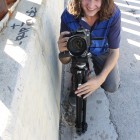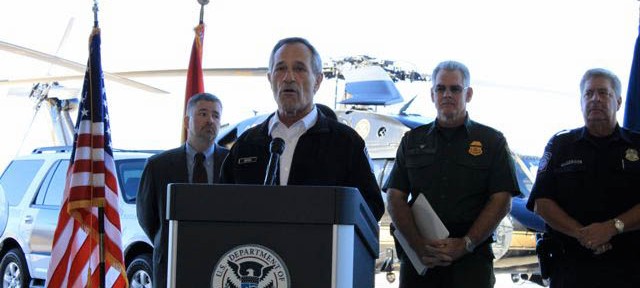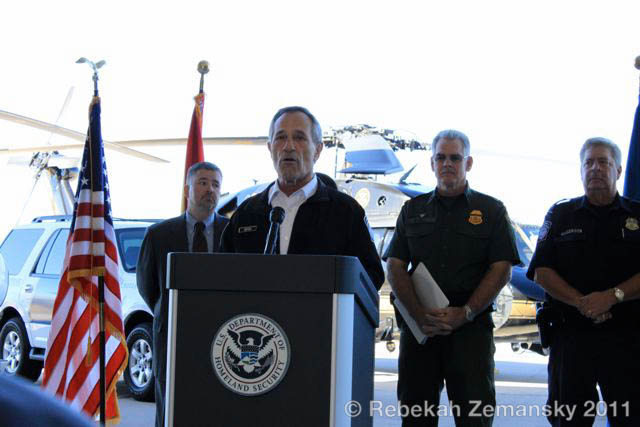Starting this month, I’m forwarding missing persons reports submitted to Missing from Mexico (through the blog and / or social media) directly to Colibri Center for Human Rights. They also take reports directly here.
Latest Stories

I met Rebekah in the fall of 2015 when we began to work on a Virtual Reality (VR) Border Project with a goal of showing the world the “Border In Our Backyard” by immersing them with 360 degree (spherical is a more just term) video, binaural audio and excellent broadcast reporting skills that incorporate traditional 2D digital skills that we have acquired at the Cronkite School into the new medium of virtual reality. After less than three months, we covered Arizona edge to edge, visited migrant shelters in Mexico, took two Border Patrol ride alongs, met with Ranchers in Douglas, visited the Pima County Office of Medical Examiner in Tucson and spent a couple of days with Samaritans all to engage audiences with subjectification of reality: letting audiences create their own perception of why there is so much death in the desert through the subjectivity of our characters is the most transparent and honest process for documentation. This extra work creates presence to a story, no matter what medium, but this is why Rebekah’s project is so valuable. Through our work between the New Media Innovation Lab, a startup we have founded with our excellent reporting team (called Terrainial) and her Missing From Mexico project, I believe we are doing something genuinely worthy, beyond money. Engaging those who deal with death has sustenance when you realize no one wants it nor knows what to do with yet are affected by it on a daily basis.

When I was 11 years old I made the decision to become a journalist. I took speech and drama classes so I could develop a better TV presence, and routinely practiced the intro to the KOB channel 4 News. “Live, local, late breaking, this is Eyewitness News 4, today at 10.”
After a tragic graduation speech in 2012, when no one laughed at my, “how about that ride in” joke, I knew I shouldn’t be allowed to speak to the masses ever again. I was three months away from attending journalism school, so being the lazy daisy that I am I simply switched my focus to writing. Turns out that is one of the better decisions I’ve ever made.

I’ve been pretty quiet lately but there have been things happening behinds the scenes including the site redesign, fieldwork and three interns coming on board from the ASU’s Walter Cronkite School of Journalism and Mass Communications. There’s few site tweaks still happening so if something’s not working let me know (and hopefully it’s already on its way to being fixed, like making comments show up for pages – they’re not gone, just hiding!). Mykaela, Ryan and Brian have also been doing fieldwork this semester and are getting ready to present their work here. Come back and read what they have to say. I’ll let them introduce themselves to you…

Just over three years ago Maria Dorantes disappeared. Better known to her friends and family as Chayo, she last contacted her family from the Sonoran border town of Altar on February 25, 2011, and told them she’d soon be trying to cross the border and return to their Los Angeles area home. On a chilly February evening about three weeks ago, Maria’s coworker-turned-friend-turned-sister Robin and Maria’s three sons, now 20, 16 and 13 gathered on Seal Beach. With a stiff breeze coming in off the sea, they struggled to hold lighters steady below inflatable paper lanterns. Flames raced across the strings from the fuel pack and up the sides of the first lantern, the second drooped sideways into its own heat and both went up in flames.

Julie Rosen, Acting Director of CPLC’s domestic violence shelter in Phoenix, Ariz. – from Rebekah Zemansky on Vimeo.)
dc/vawa: Julie Rosen (rough cut) from Rebekah Zemansky on Vimeo. In the fall of 2010, I did a story that grew out of the same reporting behind this blog (Unidentified Dead Common on the Border) for Cronkite News called Trapped in violence: Undocumented abuse victims face hurdles. The story explored how provisions in The Violence Against Women Act are designed to help undocumented women who are experiencing domestic violence, women who may be less likely to report or leave situations that are dangerous for themselves and their families because they are afraid of deportation and family seperation (especially if their abuser has legal status in the U.S.). Extra material from the story became a supplementary page, Undocumented Abuse.

It may be noticeable that things have slowed down a bit here this summer… The good news: I’ve been hired for a project with JCCF. The bad news: I have to put this blog on an indefinite hiatus while I work on it, as I just can’t keep both going at the same time. When I get back, one thing I’ll be doing here is exploring ways in which the material for the two projects, immigration and domestic violence, overlap. In the meantime this recent article, Top Immigration Court Hands Huge Win to Battered Women Seeking Asylum, on a recent Board of Immigration Appeals (BIA) decision regarding asylum is one example.
Recently, the blog received a cheery request to post a link to a site that promised help with immigration paperwork. The site looks official and trustworthy, both in the name of the site. It even comes up first in a google search on immigration forms.
The site does disclose that the forms can be downloaded for free from the government and that the government may charge additional fees. So what does this site offer? They say that they will make your application easy and error free.
Community participation. It’s become such a catch phrase that making it solidify when you stop to really look at it can be tricky, like trying to see synergy or social networking. Yet it was an excitingly tangible part of the event I covered Saturday, the official launch of the Colibri Center for Human Rights which included the Tucson premiere of Who is Dayani Cristal? More than 400 people showed up – more than double the number that attended the award winning documentary’s New York premiere. But a crowd alone doesn’t mean community.
ATENCIÓN
Si usted cree que se abandonó alguien el el desierto, contactar Colibri Center inmediatamente. Haga clic aquí y aquí por más recursos. ATTENTION
If you think someone has been left in the desert, contact Colibri Center immediately. Then click here and here for more missing persons resources.
“It’s gonna be a tough week or two,” Robin said. “I just can’t believe it’s been two years.” Two years ago – that’s how long Robin has been trying to find out what happened to her coworker-turned-friend-turned-sister. Maria Dorantes, better known to her friends and family as Chayo, was last heard from on February 25, 2011. Family had made arrangements with a smuggler to help her cross the U.S.-Mexico border in the next few days.
Please add widgets to this content area in the WordPress admin area under appearance > widgets.



